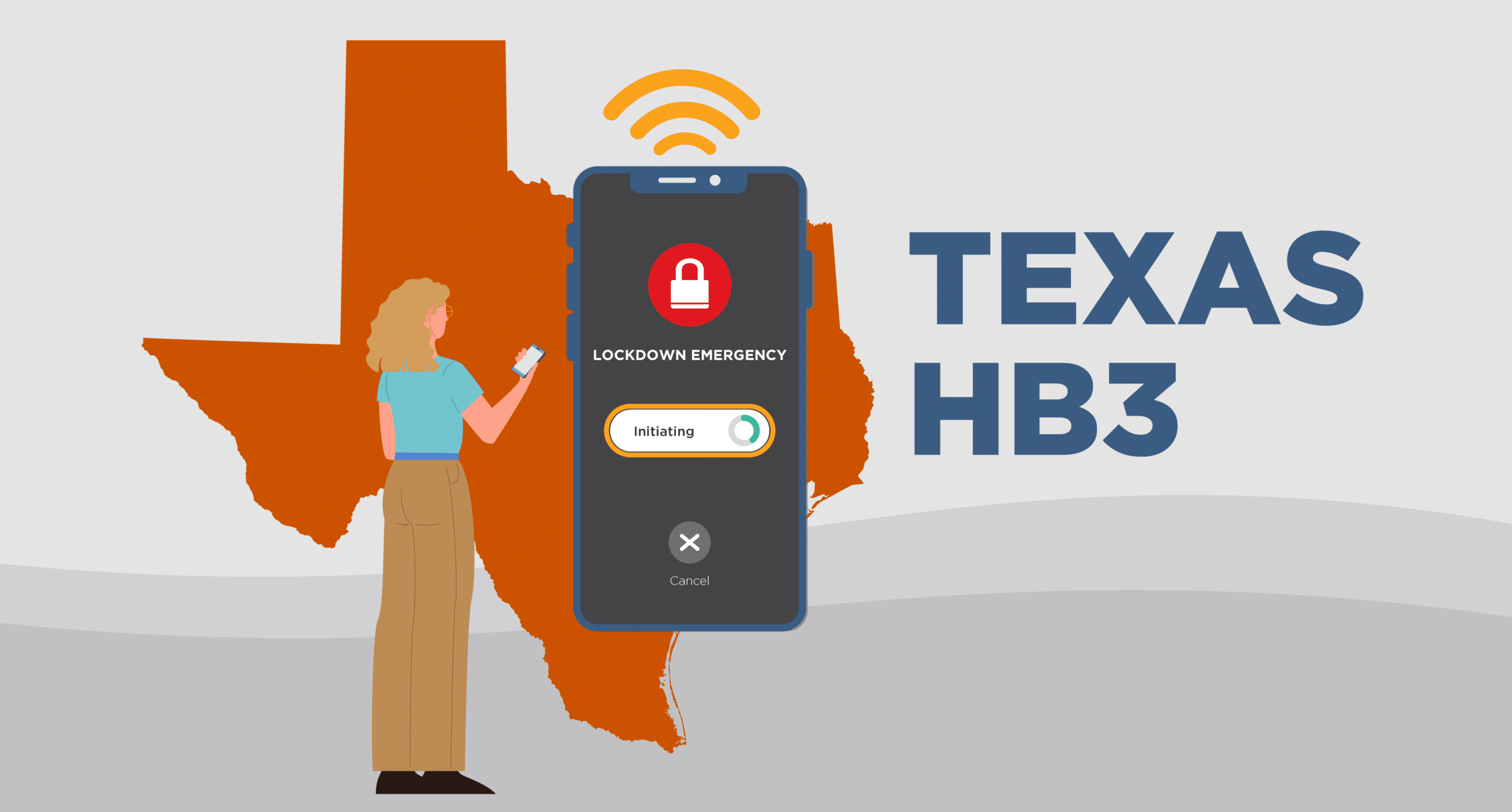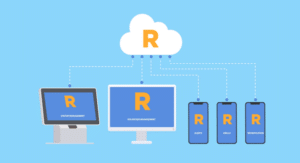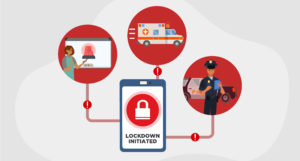Listen to this blog
4 minutes
Texas HB3, legislation focusing on enhancing school safety and security, was signed into law on June 14 and will become effective from September 1, 2023. Through this bill, Texas demonstrates its unwavering commitment to ensuring the safety of students, faculty, and staff in schools.
One area of confusion for some school districts has centered around what type of panic alert technology can be selected to meet the requirements of both HB3 and SB838. Raptor has recently had discussions with TEA leadership, who confirmed Raptor’s interpretation that there is no mandate to use a particular technology and that both software solutions and hardware solutions meet the State’s criteria.
Panic Alert Technology
One notable aspect of TX HB3 is the reference to panic alert technology as part of the school’s security measures. Both the Texas Education Agency (TEA) and the Legislature have been careful to avoid endorsing one technology over another, aiming to provide schools with the flexibility to choose what suits their individual needs best.
This is reflected in the TEA’s updated guidance on the School Safety and Prevention (SPAT) grants, which clarifies that panic alert technology can include software solutions, not just hardware devices.
In the same spirit, Alyssa’s Law (SB838)—another important piece of legislation signed by the governor—mandates that all classrooms must be equipped with silent panic alert technology. However, it does not specify the type of technology to be used, hence allowing schools the flexibility to choose a software-based or hardware-based solution as per their unique requirements.
Likewise, HB3 uses the term “technology” in a broader sense, providing examples but not endorsing any specific kind. The language of the bill is intentionally technology-agnostic, indicating that technology that is eligible for funding can include solutions “such as” silent panic alert devices, two-way radios, or wireless Internet booster equipment. This does not exclude software-based panic alert solutions, a fact that has been confirmed to Raptor by the TEA.
Funding related to HB3
Per HB3, a school district is entitled to an annual allotment equal to the sum of the following amounts or greater in the amount provided by appropriation:
$10 for each student in average daily attendance (up from $9.72 per student), plus $1 for each student in average daily attendance per every $50 by which the district ’s maximum basic allotment under Section 48.051 exceeds $6,160, prorated as necessary; AND
$15,000 per campus. Funds allocated under this section must be used to improve school safety and security, including costs associated with ensuring the security of school facilities in accordance with the requirements of Section 37.351. Additional improvements that qualify for this funding include implementing training and planning initiatives for school safety and security, such as developing prevention and treatment programs that address adverse childhood experiences as well as establishing evidence-based practices to prevent, identify, and manage emergencies and threats and implementing programs aimed at suicide prevention, intervention, and postvention.
There are also lingering questions about how schools can best comply with this law. Let’s breakdown TX HB3’s requirements.
Highlights of Texas's HB3
- Mental Health Training: The bill mandates an evidence-based mental health training program for all school district employees who regularly interact with students. This training is designed to provide instruction regarding the recognition and support of students who may experience a mental health or substance use issue that poses a threat to school safety.
- Armed Security Officer Requirement: The bill also stipulates that each school district must have at least one armed security officer present during regular school hours at each district campus.
- Agency Monitoring of School District Safety and Security: TX HB3 requires the agency to monitor the implementation and operation of safety and security measures, including multihazard emergency operations plans and safety and security audits.
- Emergency Response Map and Walk-Through: Each school district and open-enrollment charter school is mandated to provide an accurate map of each district campus and school building, along with the opportunity for a walk-through to local law enforcement agencies and emergency first responders.
- Funding: The bill also ensures funding, providing an annual allotment for each school district for measures to improve school safety and security. These measures include securing school facilities, providing security, conducting safety and security training, and implementing programs related to suicide prevention, among others.
Maximize your school safety funding with Raptor
Both TX HB3 and the recent funding and legislation related to panic alerts emphasize the state’s commitment to the safety and security of its public schools. These measures also highlight the significant role of panic alert technology in ensuring safety while allowing schools the freedom to choose the best solution for their individual needs.
Raptor Alert aligns with these efforts, dedicated to empowering schools with solutions that prioritize safety and security while offering the flexibility needed in a diverse educational landscape.
Raptor’s funding experts are ready to help you optimize your school safety funding. Speak with an expert today.
Related Resources
Guide to K-12 Emergency Management
Proven Strategies to Protect Your School
Listen to this blog
4 minutes







